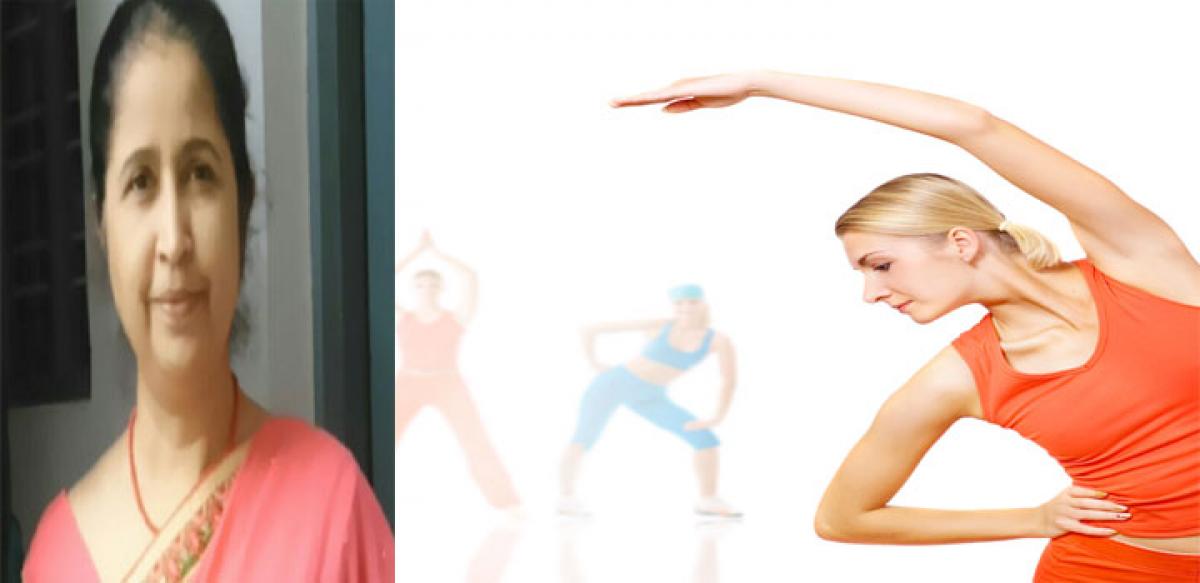Live
- Horoscope for November 28: Decoding Cosmic Clues for All Zodiac Signs
- Aishwarya Rai Bachchan’s Sister-in-Law Shrima Rai Shares Cryptic Post After Taking a Dig at Her
- Karnataka: Congress ministers indulge in lobbying ahead of Cabinet reshuffle
- Sujata joins duty after Odisha govt rejects leave extension
- Tur, urad prices have fallen in last 3 months: Govt
- NASA Alert: 130-ft Asteroid 2024 WQ2 Racing Past Earth at Over 62,000 km/h – Should We Be Concerned?
- What is UNSC Resolution 1701 and How it Relates to the Israel-Lebanon Ceasefire
- CM Mohan Majhi reviews preparedness at BJP state office ahead of PM Modi's visit
- Foods that boost the brain and sharpen memory
- Lisandro Martinez available for selection against Bodo/Glimt confirms Amorim
Just In

Osteoporosis is a condition, where bones become weak and brittle due to a decrease in bone density over a period of time. It is questionable as to how much awareness exists among the common public regarding this condition.
Osteoporosis is a major concern in women; bone health is one of the most neglected subjects. Experts say women are more prone to the condition. Proper intake of calcium and Vitamins, with right amount of exercise will keep this disease at bay
Osteoporosis is a condition, where bones become weak and brittle due to a decrease in bone density over a period of time. It is questionable as to how much awareness exists among the common public regarding this condition.
Why women are most susceptible to it?
Studies suggest that women are more prone to Osteoporosis as compared to men. Dr Rani George, PG in-charge, Dept of Nutrition, St Ann’s College, Mehdipatnam says, “Women require calcium in their bodies during and after pregnancies and also as they hit menopause.
Most women ensure to consume a healthy diet during pregnancy but neglect the same post delivery.” She further goes on to say that, because milk is the primary source of nutrition for newborns, lactating mothers should not ignore healthy intake of food.
“Repeated pregnancies only lead to more and more calcium absorption by the foetus each time, which leads to decreasing levels of calcium in the mother’s body if adequate care is not taken,” states Dr Rani.
Menopause is another leading factor to the diagnosis of Osteoporosis. Brittle bones, aches and pains upon hurting oneself are a common complaint among women older than 45. “During menopause, the body produces fewer amounts of the female hormones. Estrogen is the hormone that helps in calcium absorption, and because there is less supply of it in older women, they too are prone to suffer with bone problems,” Dr Rani explains.
Tell tale signs of calcium deficiency:
Muscle cramps
Twitching
Feeling weak
We have heard many a times that calcium is good for the bones. However, it is essential for muscles too, Dr Rani says, “Calcium is meant for both bones as well as muscles. This is why when there is a deficiency of calcium in the body, one experiences symptoms related to the muscles such as cramps,” she says.
Bone care – Calcium and Vitamin D3:
It is easy to be mystified in the midst of the many studies and fads we hear of on health care. On the one hand while we know that calcium is the most basic mineral required for the health of the bones, it is also disheartening to hear that milk and other food products have been found to be adulterated.
However, Dr Rani avers, “Just because there are some spurious products doesn’t mean we should do away with milk, which is the best source of calcium according to me. Purchasing from trusted companies and branded products with an ISI mark certainly will help to stay away from the adulterated milk.” Other than milk and its products, other calcium-rich foods found in any refrigerator or pantry are: fish, green leafy vegetables, ragi, soya and soya milk and egg yolk.
Diet is however, not the only way. Bone health can be achieved through other nutrients such as Vitamin D3, the sunshine vitamin. “There is a close relationship between calcium and Vitamin D3, which are interdependent. The Vitamin D3 helps in better absorption of calcium by the body and bones,” says Dr Rani. More ways to include Vitamin D3 - which additionally can be found in meats, milk and milk products - in one’s daily routine is through exposure to sunlight in the early morning hours. Sunlight enables the body to synthesise minerals better.
Calcium tablets are recommended for all women above 45 or 50 years of age.
Behaviours that do not aid in maintaining strong bones:
Sedentary lifestyle and staying indoors. Children too, need to be encouraged to play outside.
Exercise such as brisk walking strengthens the bones.
Caffeine and products that contain it are bad for bones.
A word of caution Dr Rani offers is not to overdo calcium consumption through various sources, such as through supplements. She suggests, “Excess of calcium is also not good as it gets wasted. If you have been taking calcium for one or two months, alternate with a one month break before resuming.”
As they say, prevention is always better than cure – and it never hurts to take the necessary precautions.
By:Elita Enoch

© 2024 Hyderabad Media House Limited/The Hans India. All rights reserved. Powered by hocalwire.com







